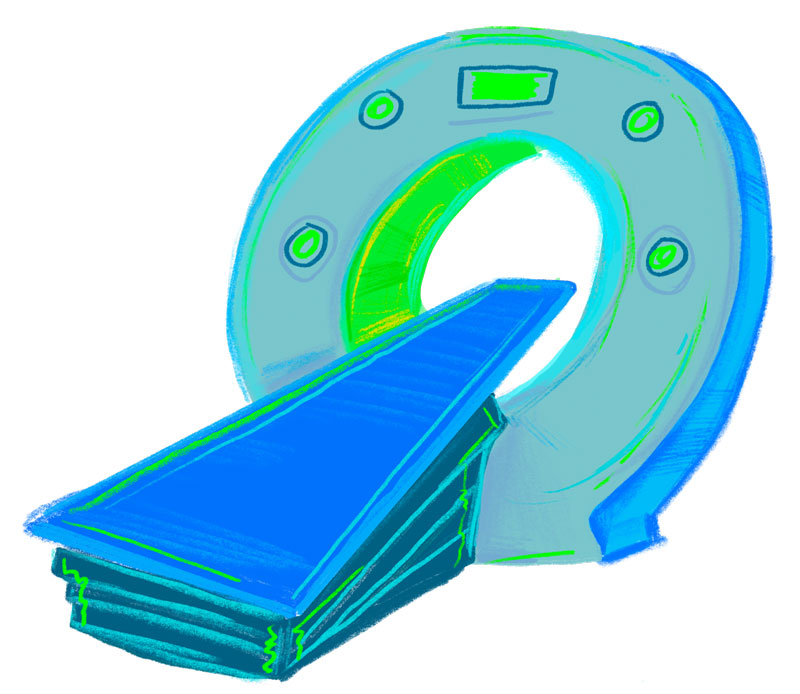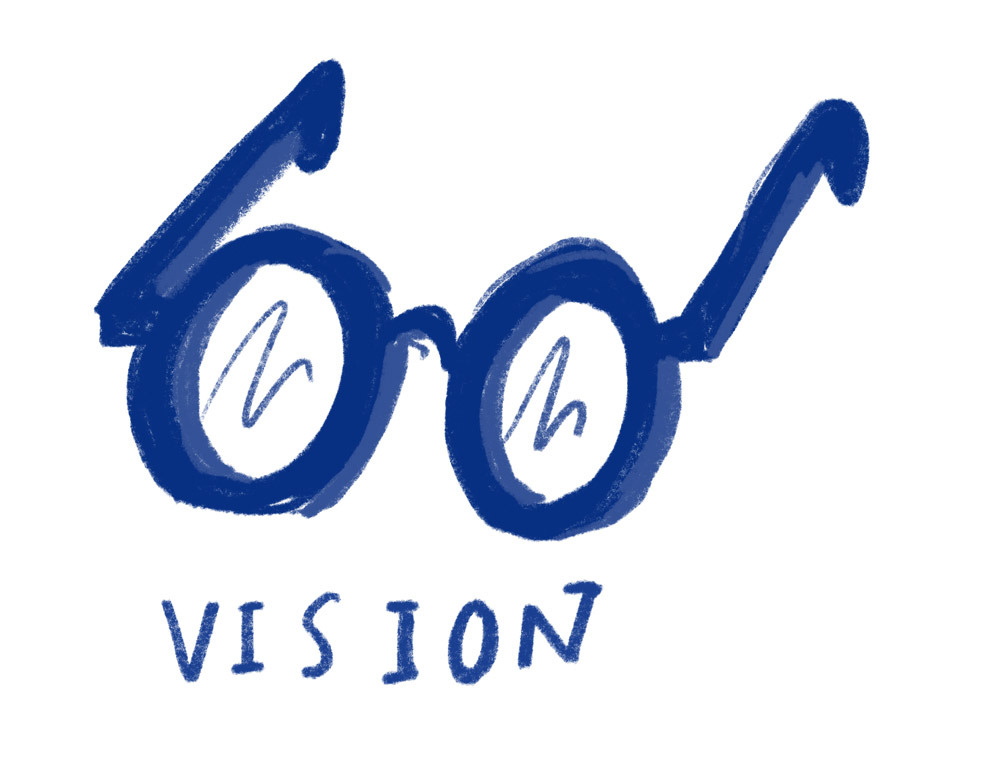Scans for children with a brain tumour
MRI scan
Magnetic Resonance Imaging
 MRI scans use magnetic fields and radio waves to create a 3D image of your child’s brain. Due to the magnets used in an MRI scan, radiographers will check for any metal on your child (belts, jewellery, watches, etc.). If your child has had surgery and has metal inside their body or has a pacemaker, let the team know, because sometimes, due to the type of metal, your child will not be able to have an MRI scan. So please make sure you call the team if you have any questions regarding the MRI scan before the appointment.
MRI scans use magnetic fields and radio waves to create a 3D image of your child’s brain. Due to the magnets used in an MRI scan, radiographers will check for any metal on your child (belts, jewellery, watches, etc.). If your child has had surgery and has metal inside their body or has a pacemaker, let the team know, because sometimes, due to the type of metal, your child will not be able to have an MRI scan. So please make sure you call the team if you have any questions regarding the MRI scan before the appointment.
The day of the scan
Dress your child in clothes without zips or metal poppers for the scan. Otherwise, they will need to change into a gown. Some hospitals may allow you to be in the room with your child while the radiographers set up for the scan – so be prepared to be metal-free too.
The scan can last from 20 minutes to an hour. MRI scans can take a long time and require a person to stay still for several minutes at a time. Some children might need medicine to help them relax or even go to sleep during the scan. This can be through sedation or general anaesthesia.
 Your child may be given a contrast agent to help show enhanced definition of the tumour and surrounding tissue on the scan. A contrast agent is usually given before a scan through the vein (intravenously). Your child’s skin will be made numb by a cream, and the injection will be given for the contrast agent.
Your child may be given a contrast agent to help show enhanced definition of the tumour and surrounding tissue on the scan. A contrast agent is usually given before a scan through the vein (intravenously). Your child’s skin will be made numb by a cream, and the injection will be given for the contrast agent.
The staff will stay in the room with your child for as long as they need and will not leave them if they are upset. They may sometimes have a play specialist in the room to help relax your child.
When the team want to scan, they will have to leave the room. They will monitor your child through a window. They can hear and speak to your child during the scan. They can quickly stop the scan and return to the room if your child gets upset.
MRI scans can be very loud. Some hospitals may give your child headphones or earplugs. Most hospitals can play your child’s favourite music. Just let them know before, or bring in a CD.
An MRI scanner is a machine with a tube running through the middle. Your child will lie on the bed that passes through the tube a couple of times. There is lots of room and light in the tube. Sometimes, to improve the detail of the images on the scan, the radiographers will place a coil near your child’s head – this will not touch your child’s head.
After the scan, your child can go home. However, if they have had a sedative or general anaesthetic, the hospital staff will check whether they have safely come back around and do some checks before they send them home.
If you would like to see an MRI scanner, watch this video created by Great Ormond Street Hospital.
Are there any risks?
There are no risks associated with MRI scans. They are painless and generally quick, with no lasting effects. The scanner does not touch your child during the scan.
MRI scans are not suitable for people with certain metal implants, such as pacemakers, because the scanner emits a strong magnetic field. This is why the team will carry out a thorough metal check before the scan.
CT scan
Computerised Tomography
 CT scans are sometimes referred to as CAT scans. CT scanners take X-ray images from different directions to create a detailed image of your child’s brain.
CT scans are sometimes referred to as CAT scans. CT scanners take X-ray images from different directions to create a detailed image of your child’s brain.
On the scan day
A CT scan is a big machine shaped a bit like a doughnut. Your child will lie on a bed.
The radiographers will take some time setting up your child in the right position. Some hospitals may allow you to stay in the room while they set up.
Once the radiographers are ready to scan, everyone (except the child, of course) will have to leave the room. Some hospitals may allow you to stay in the room while the scanner is on – but you will have to wear a lead apron.
The radiographers will keep an eye on your child through a window and can speak to them over an intercom.
The bed will move in and out of the scanner a couple of times to collect pictures from different directions.
During the scan, your child will hear the machine making a sound like a washing machine when it is on. They will not feel anything during the scan.
It is important your child lies very still during the scan to get clear pictures. Sometimes, if your child is very young, anxious or unable to stay still, they may be given a general anaesthetic.
After the scan, your child can go home straight away. However, if they have had a sedative or general anaesthetic, the hospital staff will check if they have safely come back around and do some checks before they send them home.
Some hospitals may use PET scans or angiography. Read more about these here.
Eye test
 In some cases, changes to vision or eye movement may be noted. If you notice any of the following changes, book a routine appointment at your local opticians for a check-up:
In some cases, changes to vision or eye movement may be noted. If you notice any of the following changes, book a routine appointment at your local opticians for a check-up:
- persistent headaches
- irregular changes in eye movement
- loss or change of vision
- change in head position or tilt of the head
- blurred or double vision.
- If the optician believes there is nothing wrong with your child’s eyes, they will ask you to refer back to their GP.
- If they believe there is a condition causing the symptoms, they may well refer your child back to their GP or an eye specialist.
- If they believe your child needs to be seen urgently, they will refer your child to A&E or the hospital eye department.





